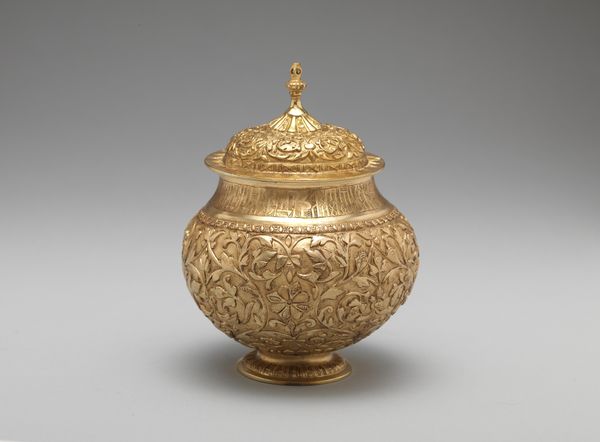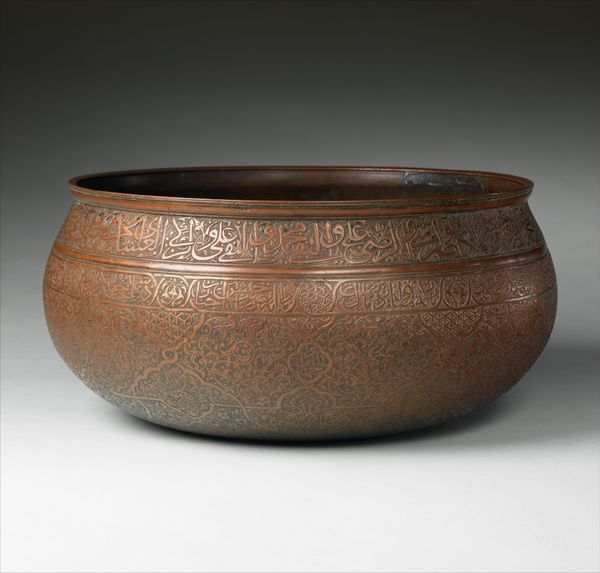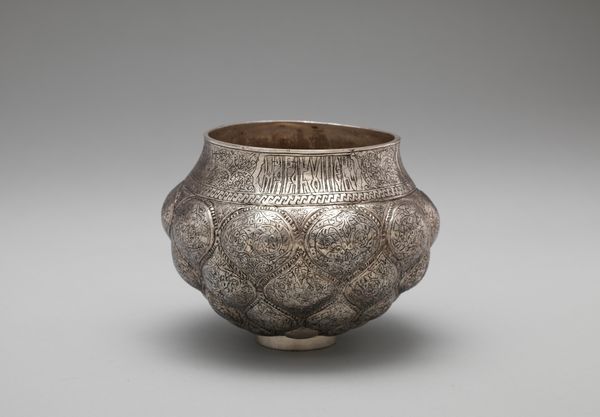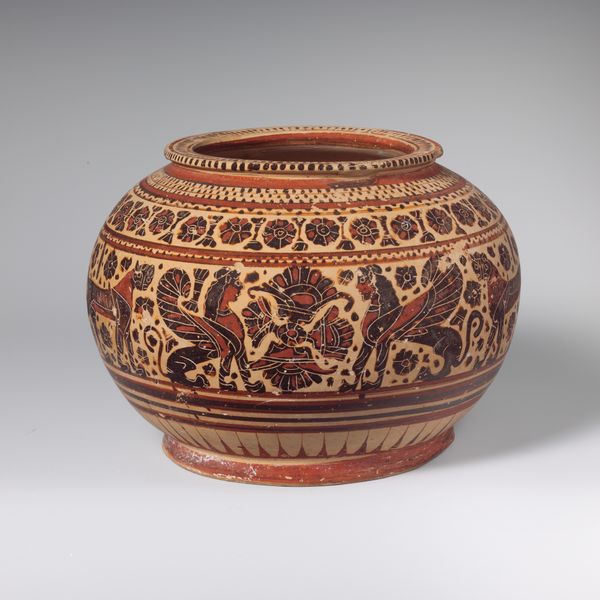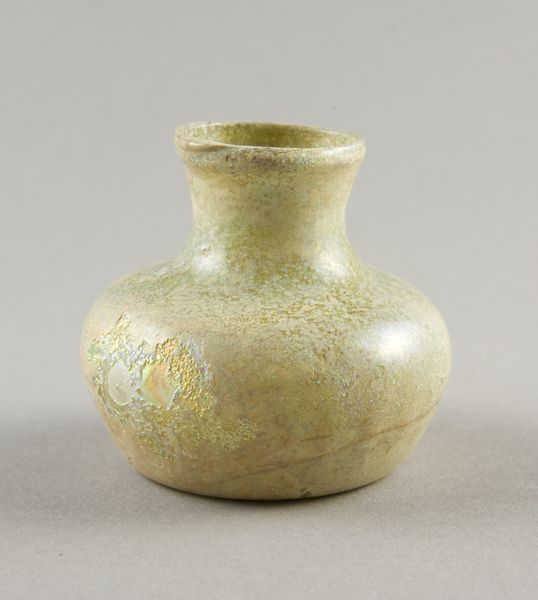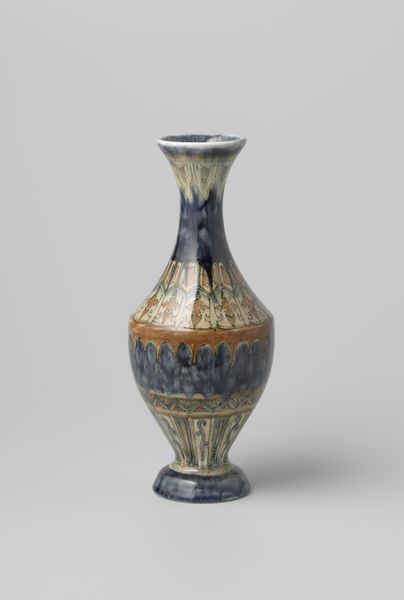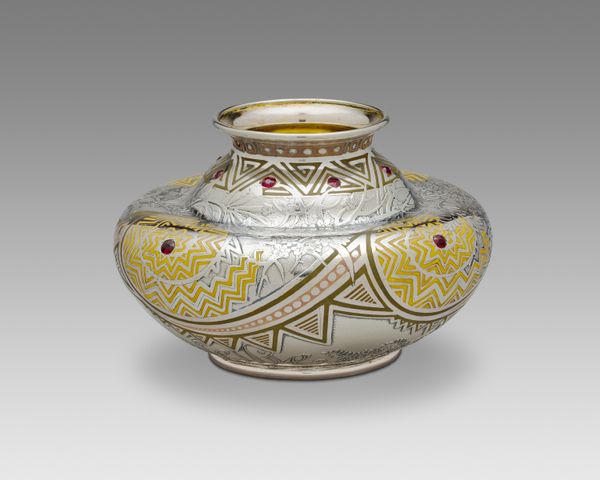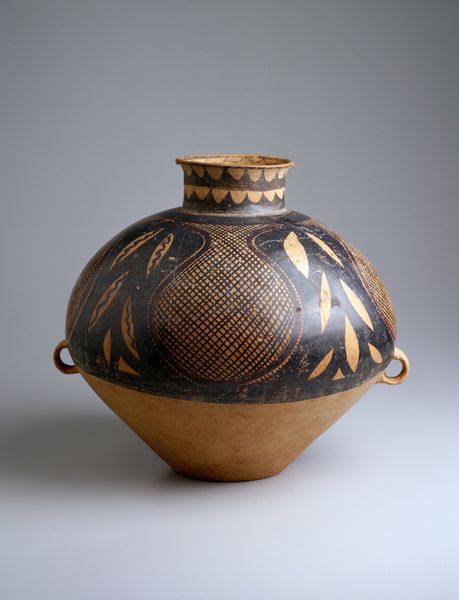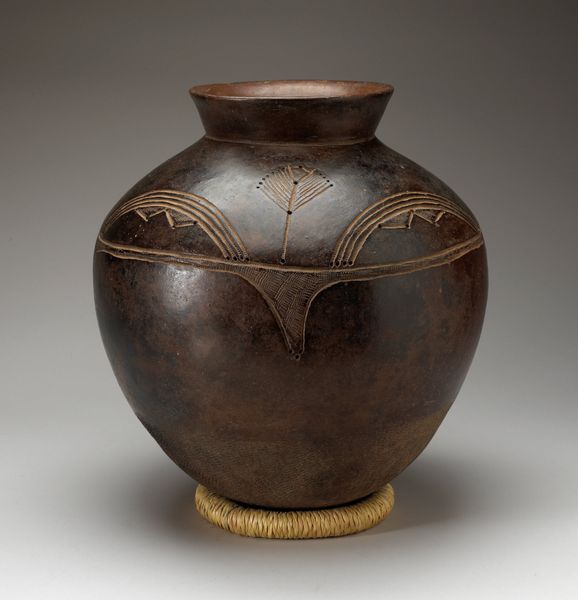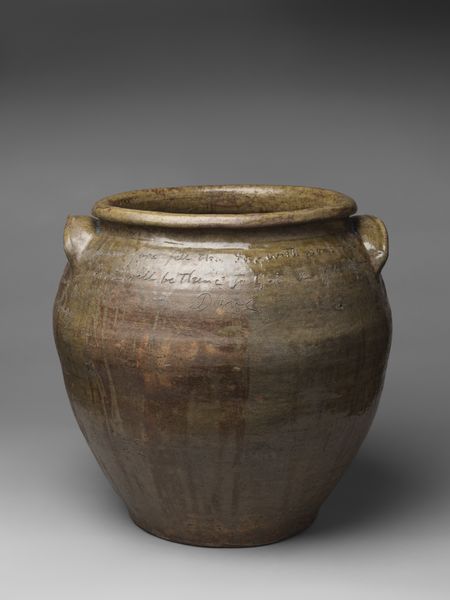
metal, relief, sculpture
#
metal
#
relief
#
geometric
#
sculpture
#
islamic-art
#
decorative-art
Dimensions: Overall: 6 × 6 1/2 × 6 3/8 in. (15.2 × 16.5 × 16.2 cm)
Copyright: Public Domain
Curator: Look at this stunning 19th-century metal vessel. It's called a "Bratina" and it’s currently housed at the Metropolitan Museum of Art. It comes from the skilled workshop of Elkington & Co. Editor: My first thought is how much the overall rounded form contrasts with the extreme detail in the surface decoration. It almost feels like the roundness is fighting against the intricate, almost frantic, quality of the chased metalwork. Curator: Exactly! The abundance of geometric shapes and swirling relief work pull heavily from Islamic artistic traditions. Examining this piece from a historical lens, we must consider the colonial context in which European workshops borrowed, reinterpreted, and often profited from artistic styles of the East. Elkington and Co., were at the vanguard of electroplating techniques. Their success relied upon the allure of exoticism for European consumers. Editor: From a purely formal standpoint, notice how the light plays across that textured surface. The contrast emphasizes depth and pulls the eye around the bowl. The band of geometric designs towards the neck acts like a visual bridge—offering just enough controlled rhythm above the frenetic patterning below. It is interesting to see how the overall silhouette—essentially a squat bowl sitting on a small pedestal—provides that stable foundation. Curator: And how does it speak to the viewer? Bratina vessels were originally communal drinking cups used in ritual toasts in Eastern Europe, later adapted and produced for different uses. This decorative art, with its historicizing motifs catered to 19th-century sensibilities regarding cultural identity. So what’s present in the artwork itself becomes inseparable from how that era conceived its global position. Editor: Well, on closer examination, I can begin to tease out a repeated floral form from the chaotic patterning. That ordered repetition contrasts nicely with the freedom that the artist seems to have had when chasing all that scrolling foliage around the vessel's belly. I think that helps it avoid feeling too overwrought, actually. Curator: Absolutely. And that interplay of geometric precision with naturalistic motifs became emblematic of Victorian-era decorative arts seeking historical justification and legitimization from Islamic aesthetics, thus recontextualizing that cultural appropriation. Editor: It’s remarkable how much the intensity of that gold finish still commands attention after all these years. Curator: Indeed, it makes you consider all that's occurred since it was made.
Comments
No comments
Be the first to comment and join the conversation on the ultimate creative platform.
